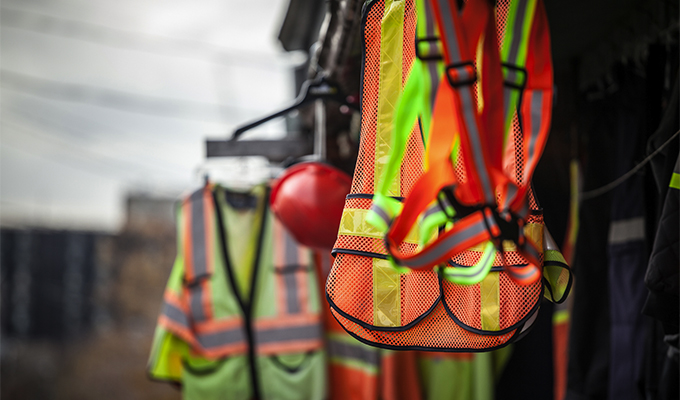Construction sites present dangers people working in other settings do not have. Workers want to avoid injuries and come home to their families at the end of the day and commercial construction businesses wish to prevent harm to their staff. On-site safety starts with a few essential pieces of equipment but expands outward to training and tracking.
What Is the Most Important Safety Equipment?
The United States Bureau of Labor Statistics estimates around one in five workplace deaths happen in the construction industry. About 33% of those are from falls from a high level. Equipment that protects workers from the most likely injuries should take top priority, but the most crucial protection pieces vary from job to job.
There are a few products nearly all construction, engineering and architecture utilize. These are some of the more common pieces of essential equipment for on-site safety.
1. Hard Hat, Vest and Gloves
A hard hat, fluorescent vest and gloves are standard personal wear for construction workers. The hard hat protects the person from falling debris or if they take a tumble. The vest makes people visible and prevents a situation where someone gets run over with a forklift or backhoe. When working in the early morning and late evening, ensure equipment has reflective elements and lights.
Naturally, a robust pair of gloves shields your hands from sharp tools and materials. Remember work boots to protect toes in case you or a co-worker drop a heavy beam or something with an edge and it lands just right to cause an injury.
2. Training
Training manuals might not be first on your list when you think of essential safety equipment. However, teaching your workers basic safety rules and frequently reviewing them can reduce the number of injuries. Set rules such as always wearing a seatbelt while on equipment and chocking the truck and trailer wheels when loading a forklift onto a trailer.
3. Safety Glasses
Construction workers sometimes work with saws, blowtorches and other equipment that sends little pieces of wood or metal flying. Wearing safety goggles and protective eye gear is a must. Full face shields may be even more effective but uncomfortable, making it challenging to see intricate details. For employees working with chemicals, chemical splash goggles prevent any liquid from getting into the workers’ eyes.
4. Respiratory Equipment
Construction is responsible for a significant percentage of air pollution. Team members worry about breathing issues from working directly with products creating pollutants.
The Centers for Disease Control and Prevention points to the prevalence of lung issues in construction workers. Using protective respiratory equipment prevents lung damage. However, selecting the correct type of equipment is even more vital. Whether working with insulation or simply breathing in the dust, ramp up the safety factor and long-term health by wearing respiratory equipment when needed.
5. Fall Prevention
Select harnesses and lanyards that meet Occupational Safety and Health Administration standards. As people become more comfortable with a task, they tend to release some safeguards. Make it a hard rule for anyone above the first floor to wear harnesses, even if they are cumbersome. Installing a temporary grab bar or guardrail may also help in tight and tricky situations, but it should not replace a safety harness to stop someone from a long fall.
Tech Is Changing Construction Safety
In the last few years, the use of artificial intelligence and the growth of the Internet of Things impacted nearly every industry. Construction safety is another area seeing better safety measures thanks to new tech.
For example, a worker can wear a device that reports back to their employer if they overheat or have a health crisis while on the job. It will be fascinating to see where construction safety equipment goes when combined with technological advances.
About the Author
Jane Marsh is an environmental and green technology writer who covers topics in sustainable construction and green building materials. She also works as the editor-in-chief of Environment.co.


